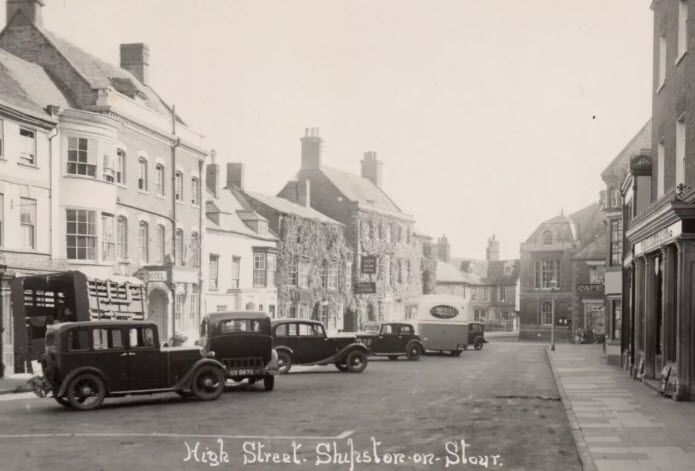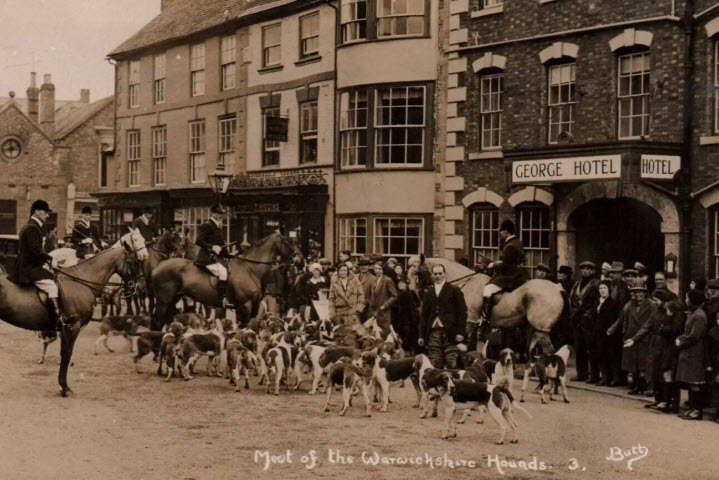

Anglo-Saxon Origins
Shipston-on-Stour has ancient roots dating back to the 8th century, when it was known as Scepwaeisctune, an Old English name meaning “Sheep-wash-Town”. This etymology reflects the town’s early importance as a sheep market, where sheep washing took place in the River Stour during summer months. Evidence of Anglo-Saxon settlement in the area includes the discovery of an 8th-century pin fragment on Stratford Road, and the town was recorded as early as 772 AD.
The name evolved through various forms over the centuries: Scepwestun in the 11th century, Sipestone, Sepwestun and Schipton in the 13th century, and Sepestonon-Sture in the 14th century.
Medieval Development
By 1086, Shipston was recorded in the Domesday Book as part of the lands held by the Archbishop of Canterbury. At this time, it was a small agricultural settlement with several mills along the river. The town had a recorded population of 25 households, placing it in the largest 40% of settlements recorded in Domesday.
The town’s medieval growth was facilitated by its strategic location on the River Stour and its proximity to ancient routes, including the Fosse Way, a Roman road that passed within a mile of the town. Shipston developed as a market town with its own market and fair, both crucial to its medieval economy.
The town was originally a township within the parish of Tredington until 1720, when they were separated by a Local Act during the 6th year of George I’s reign. The Church of Saint Edmund, with its 15th-century tower, reflects the town’s medieval prosperity. The Gothic Revival architect G.E. Street rebuilt the rest of the church in 1855.
Wool Trade Era (16th-17th Centuries)
During the 16th and 17th centuries, Shipston-on-Stour flourished as the wool trade grew in importance across the region. The town became a center for wool and cloth production, which were major industries in England during this period. This prosperity was part of the broader Cotswolds wool trade, where high-quality English wool was in demand across Europe.
The town’s prosperity during this era is evidenced by the establishment of a Quaker meeting house in the mid-17th century. Friends began meeting in Shipston around 1655, and by 1682, membership had grown to seventy-eight people. A purpose-built meeting house was constructed in 1690-92, which remained in Quaker use for nearly 300 years.
Coaching and Transport Hub (17th-19th Centuries)
From the 1600s to 1800s, Shipston served as an important staging place for stagecoaches traveling between Oxford and Birmingham. The town’s location on what is now the A3400 (formerly part of the A34) made it a crucial stop on this route. Many former coaching inns, such as the Coach and Horses in the High Street, still survive today and reflect this period of prosperity.
Railway Era and Industrial Development
The town’s economy received a significant boost with the opening in 1836 of a branch line from the horse-drawn Stratford and Moreton tramway. This tramway, part of an ambitious scheme to link the Midlands canal system to the Thames, connected Moreton-in-Marsh with Stratford-upon-Avon.
In 1889, the line was upgraded to allow steam train operation between Moreton and Shipston. The railway brought new opportunities for trade and transport, helping sustain the local economy as demand for wool declined. However, passenger services were withdrawn as early as 1929, and the line closed completely in 1960.
Modern Development
The 20th century saw Shipston transform from a traditional market town into a modern community while retaining its historic character. The town’s population has grown significantly in recent decades, from 4,457 in 2001 to 5,849 in 2021, representing substantial growth that reflects its continued appeal as a place to live.
Today, Shipston-on-Stour is recognized as a thriving market town with over 50 independent shops, restaurants, and businesses. The town has successfully balanced heritage preservation with modern development, maintaining its historic street plan with marketplace, courtyards, and alleyways that date back to medieval times.
The modern economy focuses heavily on tourism and retail, with the town serving as a gateway to the northern Cotswolds. Recent initiatives like the “Love Shipston” website and marketing campaign demonstrate the community’s commitment to promoting local businesses and attracting visitors.
Shipston’s location continues to be advantageous, situated just 13 miles south of Stratford-upon-Avon and offering excellent transport links via the nearby M40 motorway and Moreton-in-Marsh railway station. This accessibility, combined with its rich history and independent retail offering, has made it an increasingly popular destination for both residents and tourists seeking an authentic market town experience.